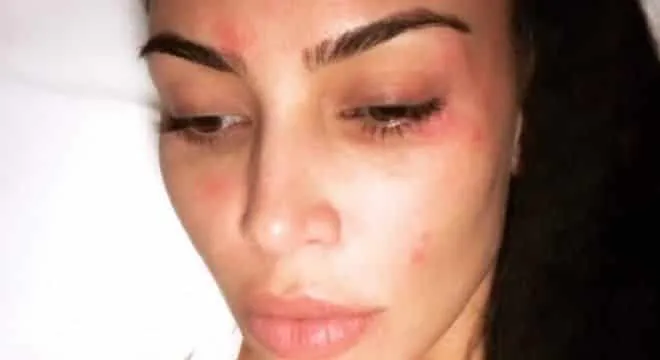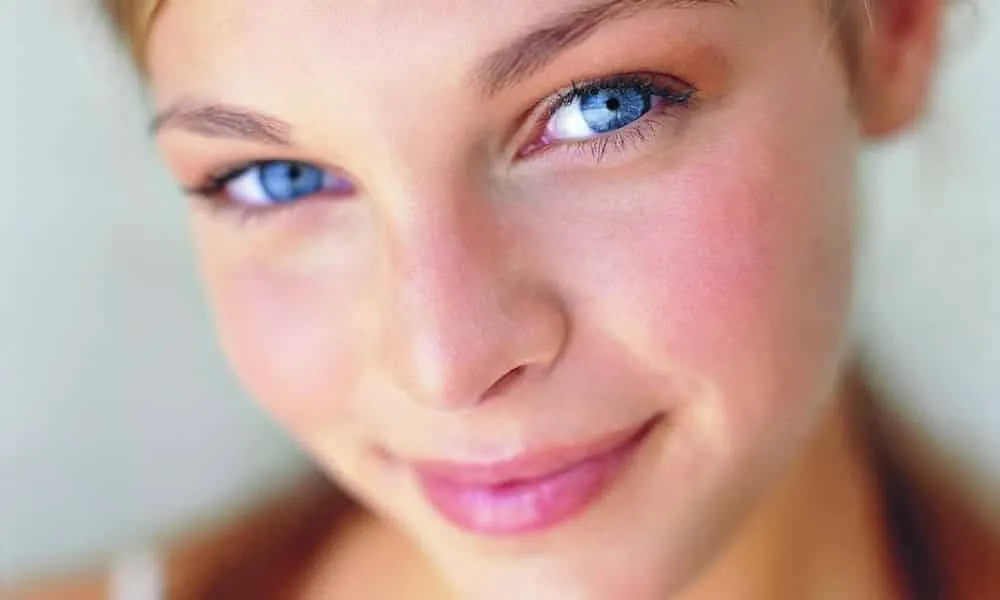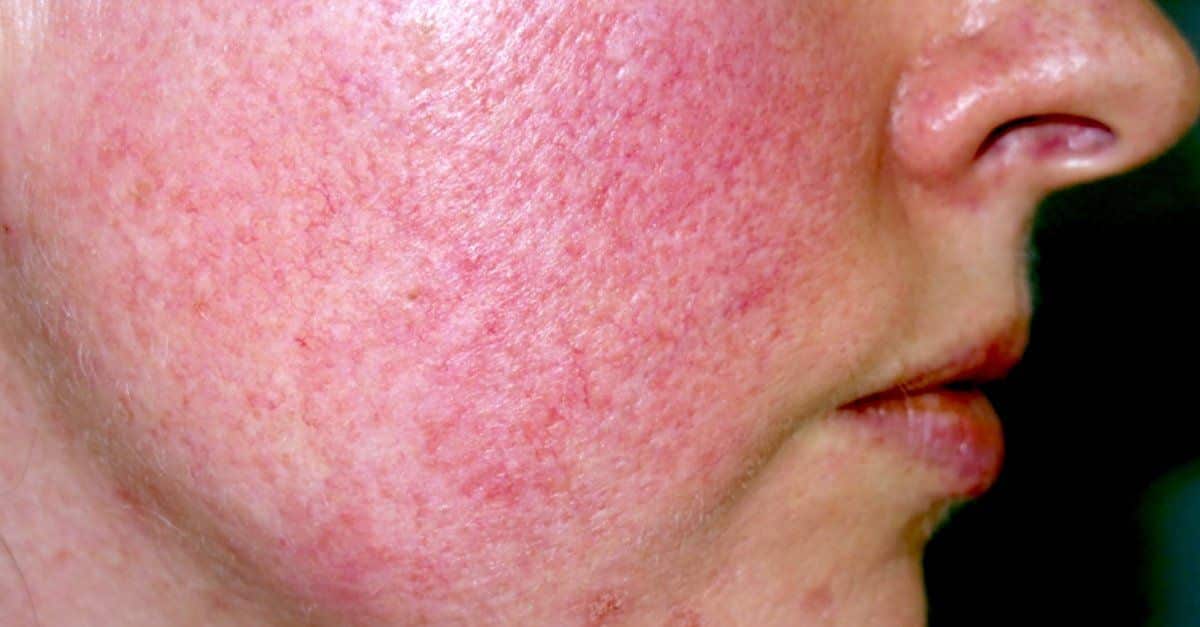Allergies, weather, psychology, products, foods, illnesses and other things can leave a person with redness on their face like pepper.
Who has never felt their skin hot or looked in the mirror and seen that it was red and flushed? Yes, our skin is subject to several internal and external factors that can affect its appearance and appearance. Therefore, redness on the face is one of those factors that most people who suffer from it constantly do not like very much.
Redness on the face can happen due to people’s daily habits, the weather, a stressful lifestyle, illnesses, among others. It is important to know what causes the face to blush. However, never avoid the expert opinion of a dermatologist when you notice this situation on your face.
Redness on the face – causes
There are many things that can make our face skin become reddish. Among them, serious diseases such as psoriasis, just daily care of using sunscreen and not getting too much sun can help avoid this discomfort.
Common factors
Below, you will learn a little about why some habits or common environmental causes can affect facial skin and cause redness on the face.
Heat and sun exposure
When a person spends a certain amount of time in the sun or exposed to heat, if they are not careful with extreme exposure to it, they can burn their skin. Thus, it becomes increasingly reddish. However, only in extreme cases do burns become serious. Therefore, too much heat and too much sun bring redness to the skin.
Clear Skin
People with very fair skin tend to blush more easily. This happens because melanin, the pigment that gives people more or less color, is not produced in excess in that body. In this way, the epidermis, the outermost layer of the skin that we can see, is more easily exposed to the sun and reacts to it more quickly, turning red.
Spicy foods
Spicy foods tend to be masters of making people blush. Pepper has a substance that stimulates the nerves in the mouth area. Thus, the greater the agitation, the more heat is released. Anyway, the hotter it is, the more sweating and blushing there will be.
Radical temperature changes
When it’s very hot and the temperature drops suddenly or we get a cold wind on our face, our cheeks turn pink. This is common because very cold winds, for example, hurt the cells on the face. In short, the lighter the person’s skin, the more noticeable it is. Furthermore, if the skin is not properly hydrated and protected, it will become redder and drier.
Allergies
Redness on the face can also come from allergies, which exist due to numerous things. It varies from person to person. Generally, the amount of pepper in a food, contact with a strong substance (such as cosmetic products) or naturally more sensitive skin are common factors. In short, it is important to see a dermatologist if you notice skin reactions to something you have ingested or touched.
Stress
Psychological situations also cause the face to turn red. Anxiety, stress, shame, nervousness and others cause the body to have an increase in the hormone adrenaline. As a result, the heart accelerates and the body temperature also increases, in addition to the dilation of blood vessels. Therefore, with the skin on our face being more delicate, the greater amount of blood in the veins and arteries makes us red and flushed.
It is common for the face to turn red when a person finds themselves in more stressful situations, which generate anxiety, shame or nervousness, as in these situations there is a rush of adrenaline, which makes the heart accelerate and the body temperature begins to rise, in addition to blood vessels dilate, increasing blood flow. As the skin on the face is thinner, this increased blood flow can be easily noticed through redness on the face.
Physical activity
In the same principle as heat, spicy foods and psychological situations, physical exercise also causes redness in the face. Excessive agitation and, consequently, heat of the body’s cells and dilation of the vessels, causes more blood to go to the face region. This is when redness appears.
Diseases that cause redness of the face
1. Lupus
When someone has lupus, cells in the immune system (which fight disease) attack the person’s own healthy organs and tissues. Therefore, several things can happen to the body, including redness and spots on the face. Lupus still has no discovered cure, only forms of treatment also using creams and oral medications.
2. Atopic dermatitis
This is a common type of dermatitis. Known as eczema, atopic dermatitis is chronic and causes inflammation of the skin. Thus, red spots and lesions appear on the skin. These lesions may be crusty and itchy.
Basically, this dermatitis can come from genetic factors or allergies, and is more common in children. Treatment involves drinking plenty of water, creams, moisturizers and corticosteroids to improve itching and inflammation.
3. Seborrheic dermatitis
In seborrheic dermatitis, red patches that peel off the skin appear on various parts of the face. Thus, the eyebrows, nose, scalp and ears are most affected. Here, stress, allergies, fungi and genetic factors can cause it to appear. Generally, shampoos and creams with specific substances are used to control this dermatitis.
5. Contact dermatitis
In short, when the skin comes into contact with a substance that irritates it, contact dermatitis appears, as the name suggests. Thus, an allergic reaction is noticed in the region, which may be spots, blisters, dryness, swelling or redness. Oral and external remedies such as ointments can be prescribed to treat cases.
6. Psoriasis

Psoriasis is a disease that causes the rapid production of new skin cells. As a result, the person starts to have lesions on their body, which are red and peeling. In short, psoriasis does not have a total cure, only forms of relief and treatment with creams, ointments, lasers and oral medications.
7. Rosacea
Rosacea causes redness on the face because pustules that look like acne pimples appear on the skin. It is a disease of unknown cause. However, there are studies that suggest that its causes may be hereditary, immunological or external. This way, it can start to become evident at any time that triggers its arrival.
Finally, rosacea can show signs of visible vessels, rougher skin, a feeling of heat and inflammation. Furthermore, it is common among people aged 30 to 50.
8. Slap disease
This is an uncommon disease that mainly affects children. Slap disease is called erythema infectiosum, caused by Parvovirus B19. Consequently, since it is a virus, it reaches the respiratory tract, causing fever, runny nose and large, red spots on the face. Thus, the well-known name of the disease appears.
In short, it is important to consult a pediatrician for evaluation, as erythema can easily be confused with a common flu.
Preventing redness on the face

To take care of or prevent facial redness from happening, it is important to know what is happening to your skin. Each person is different and has different skin. Therefore, it is important to always consult a dermatologist before starting any home treatment, especially when we talk about skin diseases such as those listed above.
However, there are daily precautions and habits that can prevent facial redness. In short, depending on the external or internal factor that triggered it, these precautions and habits also help with general skin care. Are they:
- Use of sunscreen (prevents cell burns);
- Soap and lotions for sensitive skin (buying the right type for your skin prevents redness on your face);
- Warm, steam-free baths;
- Thermal water (soothes the skin);
- Soft towels (rubbing with towels irritates the skin);
- Spicy foods (avoid so as not to stimulate facial cells).
Finally, these basic precautions help prevent facial redness that you may have been suffering from for a long time. In short, always seek medical advice.
Sources: Tua Saúde, Garce, Derma Club
Images: Hyperhidrosis, Forbes Brasil, Banco da Saúde, R7 Notícias

Sign up for our newsletter and stay up to date with exclusive news
that can transform your routine!
Warning: Undefined array key "title" in /home/storelat/public_html/wp-content/plugins/link-whisper-premium/templates/frontend/related-posts.php on line 12
Warning: Undefined array key "title_tag" in /home/storelat/public_html/wp-content/plugins/link-whisper-premium/templates/frontend/related-posts.php on line 13




